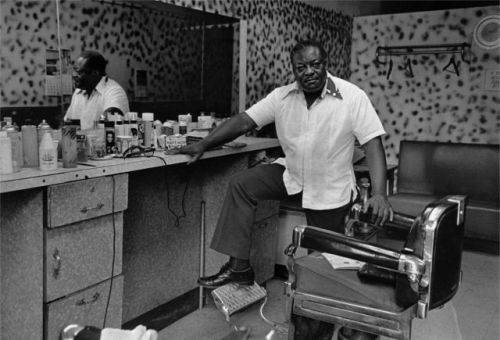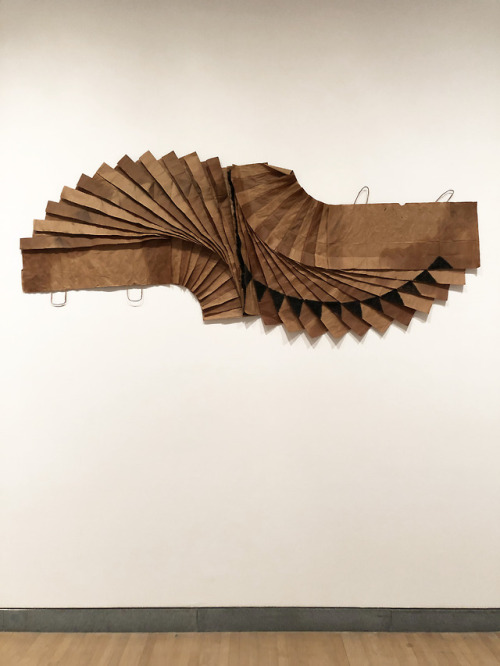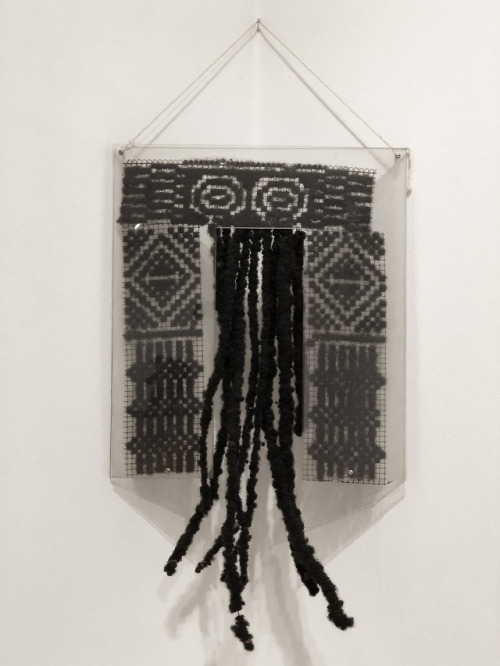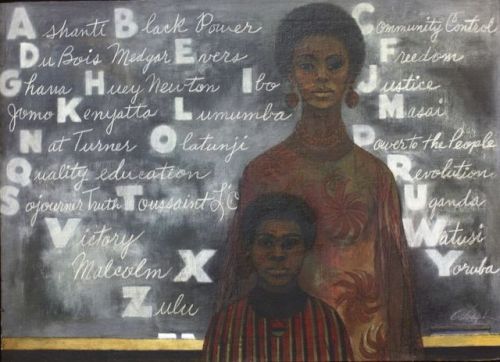At the time of the Black Power movement, natural hair in the Black community had become more than a
At the time of the Black Power movement, natural hair in the Black community had become more than a fashion trend but also a political statement. Discrimination and regulation over Black hair has been present throughout time, from the Tignon Laws to the legal discrimination of natural hair styles, such a locs, in the judicial system. Thus, the Black community’s conscious decision to wear their hair in its natural, unprocessed state became a form of self-love and empowerment as a way of breaking away from European beauty standards. Artists in Soul of a Nation often portrayed figures with natural hair styles and used real hair as a medium to further accentuate these beliefs and proclaim that Black hair and blackness itself was inherently art. Posted by Emoni BarakaPhoto: Dawoud Bey, Deas McNeil, the Barber, 1976, printed by 1979. Silvergelatin print. The Art Institute of Chicago, Chicago. Restricted gift of Anita Blanchard M.D. and Martin Nesbitt. © Dawoud Bey. (Image Courtesy of Stephen Daiter Gallery). Installation views of ⇨ David Hammons’s Bag Lady in Flight (1975) ⇨ and Nap Tapestry (1978), and ⇨ Cliff Joseph. Blackboard, 1969. Oil on canvas. Courtesy of Aaron Galleries, Glenview, Illinois. © Cliff Joseph. -- source link
Tumblr Blog : brooklynmuseum.tumblr.com
#soulofanationbkm#brooklyn museum#black power#art#artist#hair#discrimination#regulation#natural hair#self love#empowerment#art history#artists#blackness#beauty



